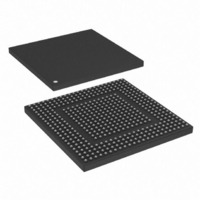MPC8308VMAGD Freescale Semiconductor, MPC8308VMAGD Datasheet - Page 668

MPC8308VMAGD
Manufacturer Part Number
MPC8308VMAGD
Description
MPU POWERQUICC II PRO 473MAPBGA
Manufacturer
Freescale Semiconductor
Datasheets
1.MPC8308VMAGD.pdf
(90 pages)
2.MPC8308VMAGD.pdf
(2 pages)
3.MPC8308VMAGD.pdf
(1170 pages)
4.MPC8308VMAGD.pdf
(14 pages)
Specifications of MPC8308VMAGD
Processor Type
MPC83xx PowerQUICC II Pro 32-Bit
Speed
400MHz
Voltage
1V
Mounting Type
Surface Mount
Package / Case
473-MAPBGA
Product
Network Processor
Data Rate
256 bps
Frequency
400 MHz
Supply Voltage (max)
3.6 V
Supply Voltage (min)
3 V
Supply Current (max)
5 uA
Maximum Operating Temperature
+ 105 C
Minimum Operating Temperature
0 C
Interface
I2C, JTAG, SPI
Mounting Style
SMD/SMT
Lead Free Status / RoHS Status
Lead free / RoHS Compliant
Features
-
Lead Free Status / Rohs Status
Lead free / RoHS Compliant
Available stocks
Company
Part Number
Manufacturer
Quantity
Price
Company:
Part Number:
MPC8308VMAGD
Manufacturer:
FREESCAL
Quantity:
300
Company:
Part Number:
MPC8308VMAGD
Manufacturer:
Freescale Semiconductor
Quantity:
10 000
Part Number:
MPC8308VMAGD
Manufacturer:
FREESCALE
Quantity:
20 000
Company:
Part Number:
MPC8308VMAGD400/266
Manufacturer:
FREESCAL
Quantity:
300
Company:
Part Number:
MPC8308VMAGDA
Manufacturer:
Freescale Semiconductor
Quantity:
10 000
- MPC8308VMAGD PDF datasheet
- MPC8308VMAGD PDF datasheet #2
- MPC8308VMAGD PDF datasheet #3
- MPC8308VMAGD PDF datasheet #4
- Current page: 668 of 1170
- Download datasheet (9Mb)
Universal Serial Bus Interface
13.6.12 Split Transactions
USB 2.0 defines extensions to the bus protocol for managing USB 1.x data streams through USB 2.0 hubs.
This section describes how the host controller uses the interface data structures to manage data streams
with full- and low-speed devices, connected below a USB 2.0 hub, utilizing the split transaction protocol.
Refer to the USB 2.0 Specification for the complete definition of the split transaction protocol. Full- and
low-speed devices are enumerated identically as high-speed devices, but the transactions to the full- and
low-speed endpoints use the split-transaction protocol on the high-speed bus. The split transaction protocol
is an encapsulation of (or wrapper around) the full- or low-speed transaction. The high-speed wrapper
portion of the protocol is addressed to the USB 2.0 hub and transaction translator below which the full- or
low-speed device is attached.
EHCI uses dedicated data structures for managing full-speed isochronous data streams. Control, Bulk and
Interrupt are managed using the queuing data structures. The interface data structures need to be
programmed with the device address and the transaction translator number of the USB 2.0 hub operating
as the low-/full-speed host controller for this link. The following sections describe the details of how the
host controller processes and manages the split transaction protocol.
13.6.12.1 Split Transactions for Asynchronous Transfers
A queue head in the asynchronous schedule with an EPS field indicating a full-or low-speed device
indicates to the host controller that it must use split transactions to stream data for this queue head. All
full-speed bulk and full-, low-speed control are managed via queue heads in the asynchronous schedule.
Software must initialize the queue head with the appropriate device address and port number for the
transaction translator that is serving as the full-/low-speed host controller for the links connecting the
endpoint. Software must also initialize the split transaction state bit (SplitXState) to Do-Start-Split.
Finally, if the endpoint is a control endpoint, then system software must set the Control Transfer Type (C)
bit in the queue head to a one. If this is not a control transfer type endpoint, the C bit must be initialized
by software to be a zero. This information is used by the host controller to properly set the Endpoint Type
(ET) field in the split transaction bus token. When the C bit is a zero, the split transaction token's ET field
is set to indicate a bulk endpoint. When the C bit is a one, the split transaction token's ET field is set to
indicate a control endpoint. Refer to Chapter 8 of USB Specification, Revision 2.0 for details.
13-90
Error Count
Decrement
Figure 13-52. Host Controller Asynchronous Schedule Split-Transaction State Machine
Endpoint Halt
(CERR)
CERR goes
to Zero
MPC8308 PowerQUICC II Pro Processor Reference Manual, Rev. 0
XactErr
Endpoint Active
NaK
Start-
Split
Do
!XactErr
!NYET
.and.
.and.
!Stall
AcK
Complete-
Split
Do
Nyet
PidCode .eq. SETUP
XactErr
Endpoint Halt
Decrement Error Count
.and.
NaK
Set XactErr Bit and
Stall
(CERR)
Do Immediate Retry
of Complete-Split
Error Count
Decrement
Freescale Semiconductor
CERR goes
(CERR)
to Zero
and
Related parts for MPC8308VMAGD
Image
Part Number
Description
Manufacturer
Datasheet
Request
R
Part Number:
Description:
Development Boards & Kits - Other Processors MPC8308-NSG
Manufacturer:
Freescale Semiconductor
Datasheet:

Part Number:
Description:
MCU, MPU & DSP Development Tools For MPC8308 Ethernet USB I2C SPI
Manufacturer:
Freescale Semiconductor
Datasheet:

Part Number:
Description:
MCU, MPU & DSP Development Tools For MPC8308 Ethernet USB 32bit
Manufacturer:
Freescale Semiconductor
Datasheet:
Part Number:
Description:
Mpc8308 Powerquicc Ii Pro Processor Hardware Specification
Manufacturer:
Freescale Semiconductor, Inc
Datasheet:

Part Number:
Description:
BOARD REF DESIGN MPC8308
Manufacturer:
Freescale Semiconductor
Datasheet:

Part Number:
Description:
MPC8308 PowerQUICC II Pro Processor Hardware Specification
Manufacturer:
FREESCALE [Freescale Semiconductor, Inc]
Datasheet:
Part Number:
Description:
Microprocessors - MPU E300 ext tmp Qual266
Manufacturer:
Freescale Semiconductor
Datasheet:
Part Number:
Description:
Microprocessors - MPU E300 ext tmp Qual333
Manufacturer:
Freescale Semiconductor
Datasheet:
Part Number:
Description:
Microprocessors - MPU E300 EXT TEMP PB 400
Manufacturer:
Freescale Semiconductor
Datasheet:
Part Number:
Description:
Microprocessors - MPU E300 MP Pb 266
Manufacturer:
Freescale Semiconductor
Datasheet:
Part Number:
Description:
Microprocessors - MPU E300 MP Pb 400
Manufacturer:
Freescale Semiconductor
Datasheet:
Part Number:
Description:
Microprocessors - MPU E300 MP Pb 333
Manufacturer:
Freescale Semiconductor
Datasheet:
Part Number:
Description:
Manufacturer:
Freescale Semiconductor, Inc
Datasheet:
Part Number:
Description:
Manufacturer:
Freescale Semiconductor, Inc
Datasheet:
Part Number:
Description:
Manufacturer:
Freescale Semiconductor, Inc
Datasheet:











